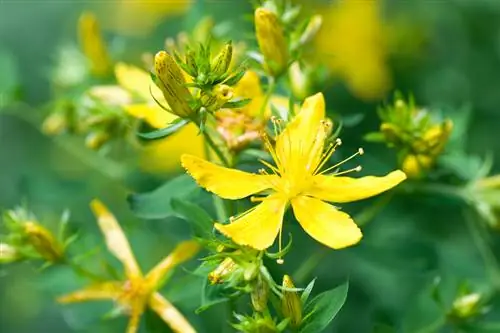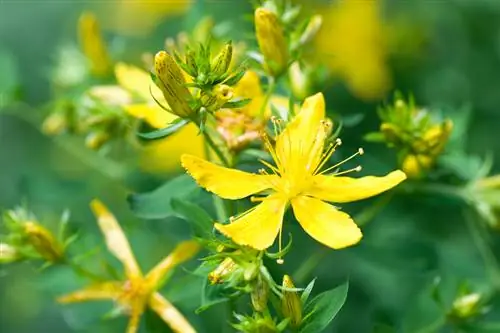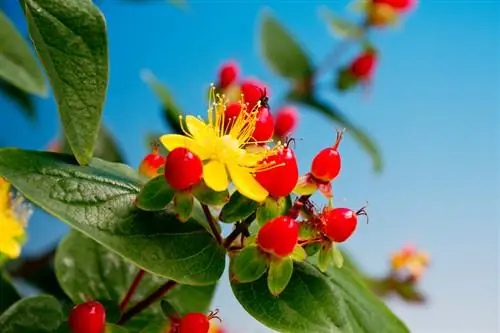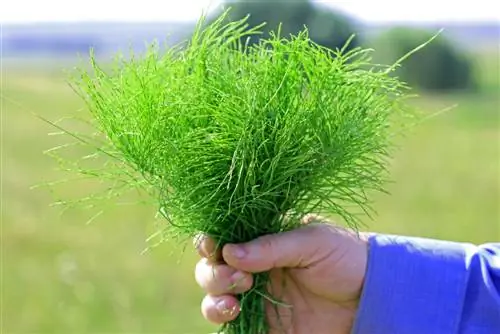- Author admin [email protected].
- Public 2023-12-16 16:46.
- Last modified 2025-06-01 06:02.
Many plants look very similar, but are fundamentally different. For example, while some are he althy and medicinal, others are poisonous. So that you don't confuse St. John's wort with another plant in the future, you should read on!

How do I recognize St. John's wort?
You can recognize St. John's wort by its green, oval leaves with translucent, dot-shaped spots, golden yellow flowers with numerous stamens and red to black berries in autumn. Crushed leaves or flowers turn your fingers red due to the dye they contain.
The leaves - extremely striking when you look closely
If you suspect that a plant is St. John's wort, you should study the leaves in detail. Here are their general characteristics:
- oppositely arranged
- 1 to 3 cm tall
- green
- oval to egg-shaped
- full margin
- hairless
The leaves are really striking when you look closely. There is no longer any doubt that it is St. John's wort when you hold the leaves up to the light and see that there are occasional translucent, dot-like spots. These are tissue gaps. In addition, a few black dots appear. The essential oil is contained there.
The flowers - golden yellow and radiant
From the end of June you can recognize St. John's wort by its flowers. They are located at the ends of the stems high above the ground. In the overall picture they appear glittering. This glow is caused by the numerous stamens that protrude from the center of the flower like rays of sunshine. The 5 rounded petals are also obvious. They shine in a golden yellow.
Can be recognized by the berries in autumn
When the flowering period is over, you can still easily recognize St. John's wort from the berries from a distance. They are about 1 cm large and ovoid to roundish. Still bright red in August/September, they later turn black. Each stem houses a berry.
The color test - playing it safe
If you want to be sure, pick either a leaf or a flower. Rub the plant part between your fingers. Have your fingers turned red? Then it's St. John's wort. There is a dye in the flowers and leaves that comes out when crushed.
Tip
You are most likely to find St. John's wort in places that are partially shaded and dry. It often grows in poor meadows, on rubble sites and on roadsides.






